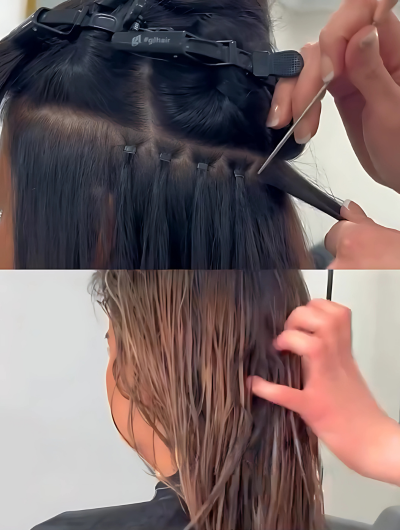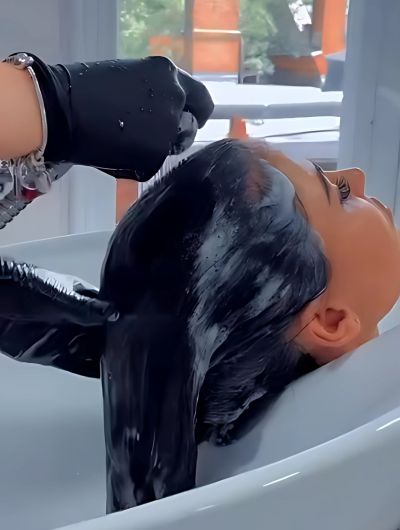So, you’ve taken the plunge and treated yourself to gorgeous hair extensions—amazing! Whether you’ve gone for tape-ins, micro-rings, keratin bonds or clip-ins, there’s no denying the instant boost they give to your look and confidence. But before you get too comfortable swishing those luscious locks around, it’s time for a little real talk: hair extension maintenance is not optional.
Think of it like this—just as you wouldn’t skip your dental check-ups or MOT your car once a year, keeping up with your hair extension maintenance appointments at your trusted hair extension salon is key to long-lasting, healthy, and fabulous-looking hair.
Let’s dive into why these appointments are more than just a luxury—they’re an essential part of your hair care routine.
Hair Extensions Are an Investment—Treat Them Like One
Let’s face it, high-quality hair extensions don’t come cheap. Whether you’ve splashed out on Russian Remy or premium Virgin human hair from reputable Hair Extension Suppliers, chances are you’ve spent good money to achieve that picture-perfect mane. But the truth is, even the best extensions won’t last if they’re not cared for properly.
Hair extension maintenance appointments are what protect that investment. It’s during these sessions that your stylist will ensure your bonds are secure, your natural hair isn’t under stress, and everything still looks seamless and polished.
Skipping these appointments? That’s a fast track to matted roots, visible bonds, and even hair breakage. No thanks.
What Actually Happens During a Hair Extension Maintenance Appointment?

If you’re new to the world of hair extensions, you might be wondering what goes on during one of these visits. Spoiler alert: it’s more than just a trim and a tidy.
Here’s a quick breakdown of what a typical hair extension maintenance session involves:
- Check-up on Bonds or Tapes: Your stylist will examine every section to make sure the bonds, tapes, or rings are still intact and sitting close to the scalp. Grown-out extensions will be removed and refitted.
- Root Detangling: Extensions tend to trap loose natural hair that would usually shed. Without maintenance, these can turn into tiny knots or mats near the scalp—especially with micro-rings or bonds.
- Scalp & Hair Health Check: Your stylist will check how your scalp is doing under the extensions, and whether your natural hair is coping well.
- Repositioning & Reapplication: As your natural hair grows, your extensions shift downwards. Maintenance involves repositioning them to their original height for a refreshed and comfortable feel.
Professional Wash & Blow-dry: Many salons offer a deep cleanse and professional blow-dry as part of your appointment, helping to reset both your extensions and your natural hair.

How Often Do You Need Hair Extension Maintenance?
It depends on the type of extensions you have and how quickly your hair grows, but here’s a rough guide:
- Tape-Ins: Every 6–8 weeks
- Micro-Rings & Nano-Rings: Every 6–8 weeks
- Keratin Bonds: Every 10–12 weeks (with check-ins)
- Clip-Ins: While they don’t require salon maintenance, regular brushing, washing, and storage are crucial.
Skipping these timeframes increases the risk of your extensions becoming tangled, pulling on your roots, or even falling out in the worst-case scenario.
The Link Between Maintenance and Hair Health

One of the biggest concerns people have about extensions is whether they’ll damage their natural hair. And the honest answer? They can—but only if they’re poorly fitted or neglected.
Regular hair extension maintenance appointments are your number-one defence against damage. Why? Because they:
- Prevent matting and tangling, especially near the roots
- Ensure even weight distribution, so one area of your scalp isn’t under too much tension
- Spot early signs of breakage or irritation before they become major issues
- Remove shed hair, which gets trapped and can cause knotting or discomfort
In short, maintenance protects your natural hair just as much as it protects your extensions.

It’s Not Just About Function—It’s About Style
We all love that freshly-styled salon look, and hair extension maintenance appointments help you keep that going for longer. Over time, even the best-placed extensions can shift, causing uneven length, volume drops, or gaps.
A regular maintenance session gives your stylist a chance to:
- Top up volume if any pieces have slipped or been removed
- Blend the extensions seamlessly with your growing natural hair
- Update the cut or shape so your style still looks current and flattering
You’ll walk out of the salon feeling refreshed, confident, and red-carpet ready.
DIY Maintenance Has Its Limits

Now, don’t get us wrong—there’s plenty you can (and should) be doing at home to care for your extensions. Daily brushing with a loop brush, sleeping with your hair in a plait, using sulphate-free shampoos, and avoiding heat overload all make a difference.
But professional maintenance is a completely different story—and for good reason. It’s not just a matter of brushing your hair or applying a quick conditioner. Proper hair extension maintenance requires technical expertise, precision tools, and the trained eye of a specialist who understands exactly how extensions interact with your natural hair over time.
Your stylist at a reputable hair extension salon doesn’t just glance at your hair—they assess every bond, ring, or tape attachment with careful attention. They know how much tension each section can handle without putting strain on your scalp. They can spot early signs of matting, tangling, or slippage that might not be obvious to you in the mirror. They also understand how your natural hair is responding to the extensions—whether it’s thriving, weakening, or showing signs of stress.

Tools matter too. Professionals use sectioning clips, bond removers, reapplication tools, loop brushes, and other specialised equipment that you simply won’t find in your everyday bathroom drawer. And even if you did buy these tools online, without the right knowledge and experience, using them incorrectly could cause more harm than good—especially when it comes to removing or repositioning extensions.
Trying to DIY your own maintenance at home might seem tempting to save a bit of time or money, but the risk just isn’t worth it. It’s not as simple as standing in front of a mirror and hoping for the best. Misjudging placement, tugging at bonds, or leaving tangled roots untreated can lead to breakage, hair loss, or even permanent damage to your natural hair.
In short, professional maintenance is what ensures your extensions continue looking flawless and your natural hair stays healthy underneath. Trust the pros—it’s what they’re trained for, and your hair deserves that level of care.
Warning Signs You’re Overdue for Maintenance
If you’re not sure whether it’s time to book in for your next appointment, look out for these tell-tale signs:
- Your extensions feel heavy or pull at your roots
- Bonds, tapes, or rings are visible when you tie your hair up
- You’ve noticed matting or tiny knots near your scalp
- The extensions look dull, limp, or uneven
- You’re brushing out more hair than usual
- Your natural hair is starting to break or shed more than normal
If any of those sound familiar, it’s time to call your hair extension salon pronto.
The Relationship Between You and Your Stylist Matters

There’s another reason why hair extension maintenance appointments matter: they keep you connected with your stylist. And trust us, that relationship is gold.
Your stylist isn’t just the person who put your extensions in—they’re your expert guide throughout your hair journey. They’ll spot early signs of trouble, give you honest advice, and tweak things as needed based on how your hair is reacting.
Plus, consistent appointments mean your stylist knows your hair inside out. That kind of personalised care just can’t be matched with random one-off visits or DIY efforts.

Hair Extension Maintenance Is About Long-Term Results
Anyone can have amazing hair for the first week after installation—but the real magic is in keeping it that way over months.
Proper hair extension maintenance gives you:
- Longer lifespan for your extensions (yes, they can last several months or more!)
- Healthier natural hair
- Consistent styling results
- A stress-free, hassle-free experience
It’s a small commitment that pays off in a big way.
Don’t Skip the Check-In
We get it—life gets busy, and fitting in another salon appointment can feel like a chore. But when it comes to extensions, those little check-ins are the difference between “nice hair” and “oh-my-gosh-your-hair-is-amazing” hair.
Hair extension maintenance isn’t just about upkeep—it’s about protecting your natural hair, making the most of your investment, and walking around every day with hair that looks and feels fantastic.
So go on—book that appointment. Your future fabulous self will thank you.
FAQ
Can I go longer between appointments if I take really good care of my extensions at home?
While a solid home care routine helps, it doesn’t replace professional maintenance. Your stylist needs to physically check the bonds and scalp to ensure everything is still in top shape.
What happens if I skip my maintenance appointment?
Skipping can lead to matting, breakage, discomfort, and even permanent damage to your natural hair. It’s just not worth the risk.
Do I need a maintenance appointment if I have clip-in extensions?
Not necessarily at the salon, but clip-ins still need regular washing, conditioning, and careful storage to stay in good condition.
How do I make my extensions last longer between appointments?
Stick to a gentle care routine—use a loop brush, sleep with your hair tied, wash with sulphate-free products, and avoid tugging when wet.

